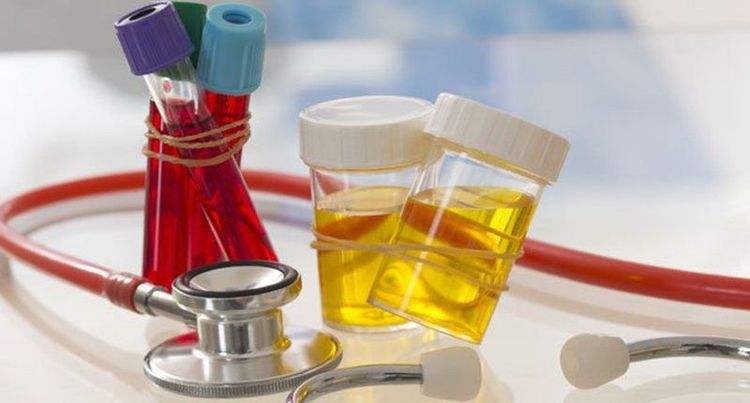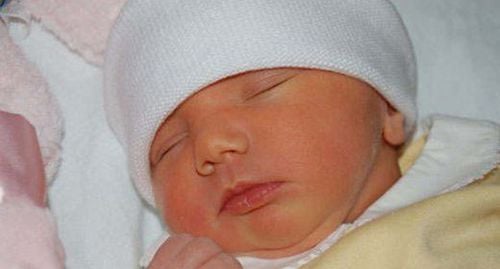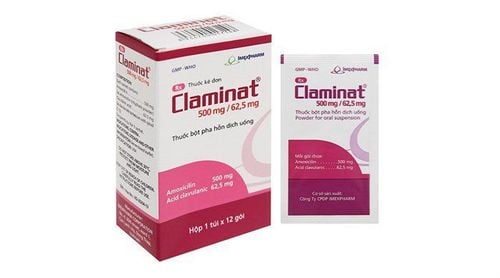This is an automatically translated article.
The article was professionally consulted by Specialist Doctor I Dang Thi Ngoc Chuong - Department of Pediatrics - Neonatology, Vinmec Central Park International General Hospital.1. What is direct hyperbilirubinemia?
Bilirubin is a yellow pigment produced when red blood cells break down. At this point, bilirubin will enter the liver, gallbladder and bile ducts before being excreted. Direct bilirubin is the type of bilirubin produced when bilirubin binds to glucuronic acid in the liver before being eliminated. In fact, this is the type of bilirubin that gives urine its yellow color.Unlike indirect hyperbilirubinemia, direct hyperbilirubinemia (obstructive jaundice) is an inability to excrete bile by the liver and/or obstruction of the bile ducts. Direct hyperbilirubinemia is defined as direct bilirubin >1mg/dl if total bilirubin <5mg/dl or >20% of total bilirubin if total bilirubin >5mg/dl.
Trắc nghiệm: Thế nào là trẻ sơ sinh đủ tháng?
Đặc điểm bên ngoài của trẻ sơ sinh đủ tháng được thể hiện qua các tiêu chuẩn như: Cân nặng, chiều dài và hình thể. Theo dõi bài trắc nghiệm dưới đây sẽ giúp các bậc cha mẹ hiểu thế nào là trẻ sơ sinh đủ tháng, qua đó có thể đánh giá tổng trạng sức khỏe và sự phát triển của bé yêu nhà mình.The following content is prepared under supervision of Thạc sĩ, Bác sĩ y khoa, Ma Văn Thấm , Nhi , Phòng khám Đa khoa Quốc tế Vinmec Dương Đông(Phú Quốc)
2. Causes of jaundice due to increased direct bilirubin
2.1. Hepatocellular causes Spontaneous neonatal hepatitis Hepatitis caused by infection: hepatitis b virus, torch, syphilis, listeria, tuberculosis... Toxic hepatitis: sepsis, intestinal obstruction, feeding prolonged varicose veins, necrosis due to infarction. Metabolic diseases: 1-antitrypsin deficiency, galactosemia, tyrosinemia, fructosemia, glycogen storage disorders. Lipid metabolism diseases (nieman-pick disease, gaucher disease, wolman's disease), zellweger syndrome, trisomy 21, trisomy 18, byler's disease, primary hypopituitarism,... Hematologic pathology: placental edema, congenital porphyria born... 2.2. Causes of biliary obstruction Extrahepatic biliary atrophy (independent biliary atresia, trisomy 18). Intrahepatic biliary atresia. Alagille syndrome. Intrahepatic biliary atresia with lymphatic edema. Common bile duct cyst... 2.3. Common causes are in the order of extrahepatic biliary atresia, idiopathic neonatal hepatitis, infectious hepatitis, 1-antitrypsin deficiency, hepatitis due to prolonged parenteral nutrition.
3. Clinical manifestations
3.1. History of fetal infection. Prenatal ultrasound detects abnormalities of the hepatobiliary system and intestinal tract. Immune hemolysis. Neonatal infections (UTIs, sepsis, viral infections). History of diet with breast milk or formula containing galactose. Symptoms: slow weight gain, vomiting, constipation. Persistent discolored or clay-like stools (very suspicious symptom of cholestatic jaundice). Dark urine (not a specific symptom). Hemorrhage. A history of siblings with similar medical conditions. 3.2. Clinical examination The patient is fully examined:Vital signs. Development parameters. General condition (detecting abnormalities in the nose, face, eyes, especially in alagille syndrome). Jaundice condition. Muscle tone. Fundus examination (in infants with fetal infection or metabolic disease). Heart murmur (may present in alagille syndrome). Abdominal examination (determination of size and density of hepatosplenomegaly, tumor, collateral circulation, umbilical protrusion...) Signs of bleeding. Feces and urine 3.3. Laboratory liver function tests: total bilirubin, direct, indirect, sgot, sgpt, alkaline phosphatase, gamma glutamyl transpeptidase, cholesterol, blood albumin, total protein, a1-antitrypsin, a-fetoprotein, protein electrophoresis , NH3 blood. Blood tests: complete blood count, peripheral blood smear, reticulocytes, platelets, complete coagulation. Screening tests for infection: serology for torch, hepatitis b (mother and child), other infection tests depending on the clinical setting. Urinalysis: tptnt, urine culture, bile acids in the urine, abnormal amino acids. Imaging tests: abdominal ultrasound, hepatobiliary scan, magnetic resonance cholangiography, endoscopic retrograde cholangiography. Supportive tests: liver biopsy should be performed in children who have not been confirmed by other tests, duodenal aspiration (helps to detect biliary obstruction). Other tests: thyroid function, arterial blood gases, afp.

4. Treatment
4.1. Treatment principles Specific treatment according to each cause and supportive treatment.4.2. Specific treatment according to the cause With the case of jaundice due to extrahepatic biliary obstruction: the patient was consulted surgically for kasai surgery. Jaundice due to septic hepatitis: treatment of infection. Jaundice caused by galactosemia (a disease that makes the baby's body unable to digest galactose, a simple sugar found in dairy foods): a galactose-free diet. 4.3. Supportive therapy Provide energy 125% of the requirement according to ideal body weight (by IV line or feeding). When providing energy by mouth: lipids should be given in the form of medium chain triglycerides. The amount of protein needed is 2-3g/kg/day for children without hyperammonemia. Supplement with fat-soluble vitamins: vitamin A, vitamin D, vitamin E, vitamin K Ursodeoxycholic acid: can stimulate bile flow and push and discharge toxic bile acids from the liver. Jaundice caused by direct hyperbilirubinemia is a dangerous disease that needs to be examined and treated at an early stage to prevent potentially dangerous complications. Therefore, when seeing that the newborn has signs of pathological jaundice, parents should soon take the child to the medical center for examination and support for the best treatment advice.
Specialist I Dang Thi Ngoc Chuong has worked at Children's Hospital I, Thu Duc Hospital and University Hospital of Medicine and Pharmacy in Ho Chi Minh City. With strengths in neonatal diagnosis and examination - neonatal resuscitation, Dr. Chuong is currently a pediatrician at Vinmec Central Park International General Hospital and a member of the Ho Chi Minh City Pediatric Association. Bright.
Please dial HOTLINE for more information or register for an appointment HERE. Download MyVinmec app to make appointments faster and to manage your bookings easily.















